[full_width]
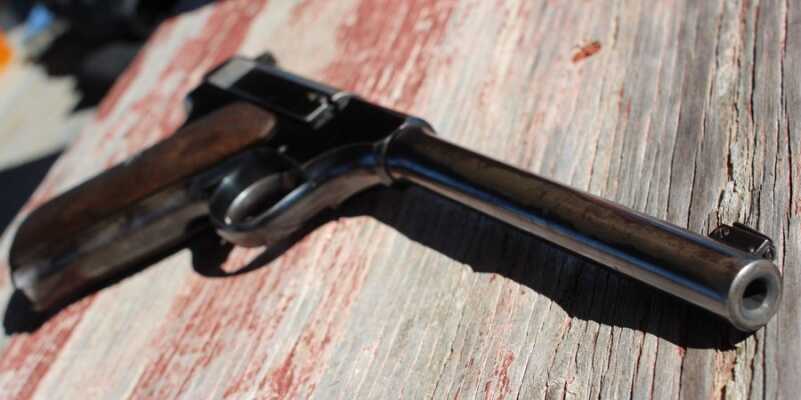
How can you tell what’s a good investment? It depends on what you intend to get out of the gun.
[/full_width]
First off let me say that this is not intended to be the be-all-end-all buying guide for antique firearms. Books are written on this subject that cover single guns. But there are some simple guidelines that can help you not get taken. Below are 5 things I look at when checking out any historic or collectable firearm I am thinking about buying. Some of this will seem obvious, but we can all get overly excited about a purchase’s “cool factor” and gloss over things that might otherwise raise a red flag. If nothing else remember the old adage ,”if it is too good to be true, it probably is.”
Condition
Like with just about everything, condition is key and will be one of the biggest factors in pricing. As a collector you have to figure out what condition you will settle for. I personally like to collect “shooters” and not guns with 100% original finish. What I mean by “shooter” is a gun that is 100% mechanically safe and functional. Yes, having a good percentage of its original finish is nice and I will pay a premium for that on the right gun, but I like to shoot the guns I have. I would have a hard time pulling the trigger on an original 1873 Winchester that looked like it shipped from New Haven yesterday. But one that has some honest wear from being used but not abused, just begs to be fired again–after a good cleaning and oiling. Check headspace and other things make it safe, too. In other words, there are museum pieces and there are usable ones. I like the ones that don’t belong in a museum, Dr. Jones.
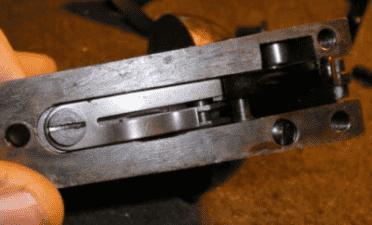
Sear and bolt spring on an 1873 Colt. This is the weakest part on these old colts and it has almost always been repaired at some point.
Old guns that have been used may have replaced parts. This reminds me of the old story about a guy trying to sell George Washington’s hammer. The line goes something like, “Yep, this was his hammer all right. The handle has been replaced 4 times and the head twice.” Obviously that is not an original. But what about a WWII issued 1911 having a replacement recoil spring? Or a sear and bolt spring on a Colt 1873? Unless a gun is being advertised as New-In-The-Box, Mint or Unfired, having a few replacement parts like the above is not necessarily a bad thing. Yes, it means that they are not 100% original and will not have the value as such, but it also means there has been some maintainable done and that has value if you are looking for a shooter.
Below are a couple of pictures of two Colt Woodsmans. They were both sold at Rock Island Action recently. One was listed as being “almost new in the box” and it even came in it’s original box. It sold for over $4,800. The other one is far from new looking. It is actually older and a bit more collectable example as it is one before they were stamped WOODSMAN. But the cosmetic condition is pretty poor without a whole lot of bluing left. It sold for about $600. It is functionally in great shape and you can read my full review of it here.
[one_half]
[/one_half][one_half_last]
[/one_half_last]
Research
This is one of the most important things you can do before you even think about buying an antique firearm. It is very easy to get caught up in the excitement of a “deal” and ignore issues you would other wise notice. I am just as guilty of it as the next guy. There are some guns that I know a lot about as I have bought books on them, looked through auction house catalogs, perused old magazines for reviews on them when originally released, talked to fellow enthusiasts and picked the brain of gunsmiths. But there are a lot of guns that I either don’t know anything about or know just enough to get into trouble.
When you go to start collection it is best to find a couple of different guns that speak to you and do as much research as you can about them. Although it is a good place to start to get a general idea, don’t just pop open the most resent blue book and look for what they have listed for market prices. There are so many variables in these historic guns, and their value, it is hard to have it all in price book. Like how the Inspector Stamp on old US Military arms can effect value. Do you know which inspector stamps should be on the lock panel of a 1861 Contract Musket made by Colt? I sure don’t off the top of my head but with a little bit of research I found a picture of an original. But there are variance in these that can effect the value. Two different guns that are exactly alike in condition but have different Inspector Stamps can have drastically different values. Being about to figure the small details out is where research comes into play.
Where you buy it
There are a lot of fakes out there. Some are very, very well done and can fool most collectors. The more popular the gun is among collectors, the more fakes you will see. The Colt Single Action Army gets faked a lot for example. When dealing with popular guns it is very important to know and trust your source. Reputable auction houses like Rock Island are a great place to look especially when you are starting out. Even though you are bidding against other collectors, deals still can be had. There are a lot of historic and collectable guns listed here at GunsAmerica by our dealers. GunsAmerica will shut down any dealer that is selling fraudulent items and will make sure the buyer is taken care of. Deals and great firearms can be found and bought from individuals as well. But make doubly sure to do your due diligence. The toothless guy outside the gun show selling his, “grandpappy’s Yankee killin’ musket” might not be the source for an 1858 Enfield. But then again if you know what you are looking at…
Consider this example. There was a Civil War era musket for sale recently in the Antiques section of my local Craigslist board. The price was reasonable, so I wrote the dude who was selling it. We exchanged a few messages, and then I mentioned what I do for a living and he suddenly went dark.
I’d stay away from the FaceBook and Craigslist ads. If someone has a genuine gem, they’ll want to put it in front of real buyers. That’s where services like GunsAmerica’s free local sales can really be beneficial.
Reproductions
One thing you should check on while doing research is if there has ever been a reproduction made of the gun you are thinking about collecting. Reproductions are a very good source for fakes so you have to be extra careful. I once saw a Colt Peace Maker fake that had an original frame and all the other parts were taken from an Italian made copy. The Italian stamps had been filed off and the gun reblued and then “antiqued” to look like 100+ years of wear. But if you looked close, the places where the stamps had been removed from the barrel were flat and should have been rounded. Along with some other things that just didn’t seem right, it became pretty clear that it was a fake.
Most of the reproductions are pretty close to the originals but not quite right. Italian copies tend to be made a little heavier than the originals. Barrels are usually thicker, especially on black powder guns, than originals. If you are looking at long arms, the wrist area on the stocks are typically thicker and not as elegant as the originals. As part of your research be sure to handle the reproductions to find things to look for on guns that are reported to be originals. And if the gun is stamped Made In Italy it is a reproduction.
[one_half]
[/one_half][one_half_last]
[/one_half_last]
Provenance
This can be tricky as provenance can be faked too. It also could have been faked 100 years ago. I bet I have seen 30-40 revolvers that are reported to have been owned by Jesse James. A lot of them even had letters signed by his mother saying they had been his guns. It is known that she was selling guns to every Tom, Dick and Harry that came to see her. She would buy used guns from a hardware store and sell them as belonging to her son. But Jesse James did own some guns, there is no doubt about it. But one with a letter from his mother isn’t worth the paper it is printed on. Although, that paper might be worth something since it does have Jesse Jame’s mothers signature on it.
This also reminded me of a Colt Lightning that is reported to have been Billy the Kid’s. There is an old letter with this gun as well from someone in New Mexico that claimed he got the gun from Pat Garret himself. A quick internet search of Colt serial numbers quickly debunked this one. Billy was killed, assuming you believe that Pat Garret shot him, in July of 1881. The pistol I was looking at was made in 1894. Yep, someone got taken. But that happened back in the 1930s. Today we have a lot of great resources at our disposal that wasn’t available then. Heck, I check the serial number on that Lighting on my I-Phone while I was looking at the gun.
At the end of this, you’ll have to decide on what you’re looking for. If you want a piece of history that you can shoot, than it doesn’t much matter about minty condition. If you want a safe queen for a museum or for an actual investment, than you need to do your homework.
And that’s the most fun part of this process. Once you decide on what you want, get reading. Check out the available literature. You can read up on a gun and make a check list of everything that you want/need.

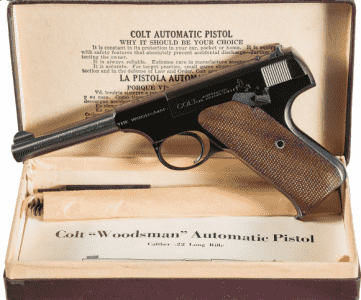
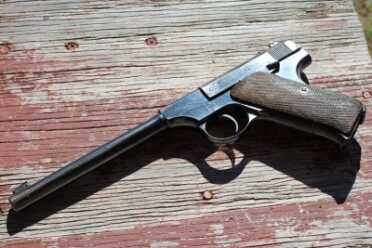

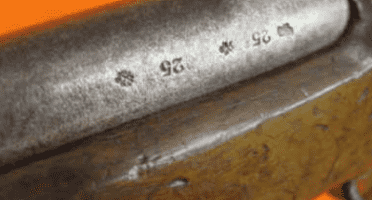

Even Rock Island can Do you wrong. I bought a NPRF (Non Professionally Refinished) Union Switch and Signal 1911A1 based on a photo on their site that made the gun look like it was reparkerized, and I also like to purchase nice, but shootable collector guns. However, it had been sanded and bubba bright blued. They took the pictures in such a way that it hid the true look of the finish. I don’t think it was accidental either.
Growing up, my grandpa had a lot of antique guns and so I have always been interested in starting my own collection. However, I definitely want to avoid the fakes by finding a reputable source. Thank you for mentioning the need to stay away from Facebook and Craigslist when it comes to buying the types of guns that I am looking for as I now know to avoid them.
BTW… I agree with everything in your article, but I also see well-meaning idiots selling what they, in their mind, believe is a truly collectible firearm. Maybe it has been passed down in the family for generations with a good story about where it allegedly came from. Except the story isn’t true and the serial number etc… doesn’t bear it out. Or the guy with the rack grade M1A that expects to get a fortune for it because it’s a “National Match” M14 because it says “NM.. right there on the front sight!” Don’t waste your breath trying to explain things, beliefs are difficult things to overcome. Just move on…
Be very careful of added on markings like inspectors’ initials or firing proofs. These markings have been widely copied with modern reproductions. I know for a fact that every single stamp used by gov’t. inspectors on M-1 Garands havebeen copied – there was a website that for years offered them all for sale – SA, EMcF, GHD, all of them. Take a modern or even good condition common original stock and hit with the right fraudulent stamps and you have a perfectly acceptable looking WW II Winchester stock worth maybe a thousand $. There is no reason to think other collectable firearms such as SAAa, ’98 Mausers or ’03 Springfields haven’t been copied as well. VERY much caveat emptor. If you aren’t lead pipe certain a gun is real, find an expert to check it out.
I’m more of the shooter collector, and my collection is WWII firearms. The goal for me is to have a weapon from every army that was involved in the war. I’ve got Mosin Nagants, Mausers, an M1 Garand, Tokarev, Makarovs, Walther PPK, JP Saur and Sohn, and a few Japanese Arisakas So many I still want to get. Now do these have a lot of value money wise? Not so much, but to me they’re valuable because of the history, the war itself, and the people that carried these weapons into battle. Every time I go to the range with one of these weapons, I think to myself, was this gun used at Stalingrad? Was it used in the Philippians? Or carried into battle on D-Day? To me, that is the value I’m looking at.